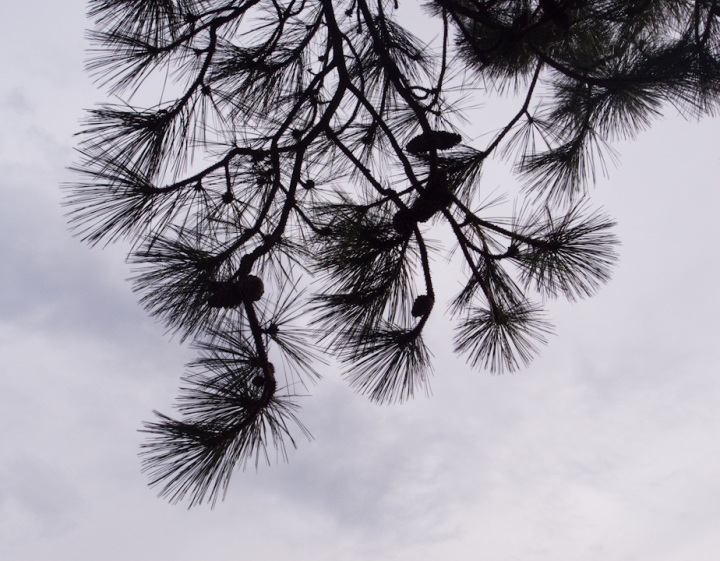
Clarity Control

One of the more heavily used controls in Lightroom’s “Develop” module is labeled “Clarity”. Here’s a nifty little illustration of its powers.
I’ll do three treatments of the same picture; needly evergreen branches against a grey sky. This is my Ricoh GX100 point-and-shoot pocket camera; there’s nothing terribly special about the picture except perhaps that I shoot in raw, which maximizes the scope for exactly this kind of post-processing.
The first shot, aside from the built-in anti-aliasing, is more or less how it came out of the camera, modulo a little cropping.
Lightroom’s Clarity control does something that appears to the eye like straightforward sharpening. I think there are some clever edge-analysis tricks going on, because the effect, in moderation, is almost always pleasing. I recall an online demo that James Duncan Davidson posted illustrating some part of Lightroom workflow, in which he recommended giving most shots a bit of Clarity boost; I seem to recall words along the lines of “as much as it’ll take.” The second version has the Clarity cranked about to the max; maybe more than this particular photograph ought to have been asked to take.
Everyone knows that more sharpness is always a good thing, right? So why, you ask, does the Clarity control present as a slider that you can crank down as well as up?
It turns out that cranking down produces an effect that is paradoxically pleasing on quite a few photos. I find it works well, in particular, for photos of trees.
For this to succeed, it seems that the picture has to be in pretty good focus to start with. When I’ve done it with pictures here I’ve tried to make a point of mentioning it, because the effect is seductive but at some level unnatural.
The third version has the Clarity cranked about as far down as you can go. See what I mean?
And remember: use the awesome power of post-processing only for good, not evil.
Comment feed for ongoing:
From: Constantin Gonzalez (Mar 04 2010, at 00:14)
Hi,
this effect looks to me like the "Definition" control in Apple's "Aperture" application.
The definition of "Definition" (sorry for the pun) according to Apple (as far as I can remember) is something along "localized contrast".
The third image which is the anti-clarity example is quite revealing: The darkness of the twigs tends to smear into the sky, almost like a blurred version of the image.
Notice though, that the blurring is local to the twigs only, which produces the cloudy bubbles around them, as opposed to general blurriness that a blanket blur/sharpen filter would bring.
I'd say then that "Clarity" or "Definition" is a contrast enhancement (maybe with some unsharp masking thrown in), but limited to the parts of the image with high frequency (which will bring out the details).
Cheers,
Constantin
[link]
From: njr (Mar 04 2010, at 01:49)
"there’s nothing terribly special about the picture except perhaps . . ." . . . that it's probably my favourite among all the photos you've ever posted; regardless of which clarity setting you choose!
Photoshop has the same setting available, of course.
[link]
From: Lenny (Mar 04 2010, at 03:51)
Also: lower clarity for portraits, where you don't necessarily want every feature to be too sharp.
So I'd guess, not being a Lightroom user.
[link]
From: Tony Fisk (Mar 04 2010, at 03:59)
A bit like flowing water...
[link]